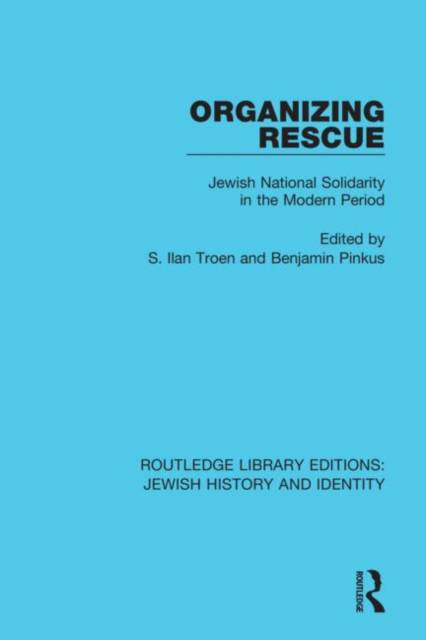
- Afhalen na 1 uur in een winkel met voorraad
- Gratis thuislevering in België vanaf € 30
- Ruim aanbod met 7 miljoen producten
- Afhalen na 1 uur in een winkel met voorraad
- Gratis thuislevering in België vanaf € 30
- Ruim aanbod met 7 miljoen producten
Organizing Rescue
Jewish National Solidarity in the Modern Period
Omschrijving
Upheavals of the modern period have dramatically changed the traditional pattern of the rescue of Jews by Jews. Whereas until the mid-nineteenth century rescue was carried out by community leaders in accordance with the religiously rooted injunction for the redemption of captives, in the modern period largely secular international Jewish organizations and the State of Israel have emerged as the primary instruments of expressing Jewish national solidarity. The campaigns to restore the exodus from the Soviet Union and to rescue Ethiopian Jews through Operation Moses are the most recent expressions of the imperative to save threatened Jewish communities and reconstitute them elsewhere. The dynamics and achievements of organized rescue in the modern period are critically assessed in this volume, which includes 18 interpretive essays and case studies by leading European, American and Israeli scholars.
Organizing Rescue is divided into four sections. The introductory essays examine the roots of Jewish solidarity in Jewish law, and trace the transformation of rescue activity from a religious to a largely secular undertaking. The three sections that follow group selected case studies chronologically. Part I, from the Damascus Affair to the First World War (1840-1914), deals with new patterns of response to the persecution of Jews in Europe, Asia and Africa under the impact of emancipation, nationalism and antisemitism. Part II, World Wars and the Shadow of the Holocaust (1914-1948), deals with the transitional period that brought hope and bitter disillusion to Jews in Europe and the Middle East. Part III, The Contemporary Period (1948 to the present), examines the different manifestations of Jewish national solidarity that developed in response to the Holocaust and the creation of the State of Israel.These studies illuminate and evaluate the efforts of Jews to defend and preserve communities separated by vast distances and diverse cultural and political systems. By placing these studies in an integrated historical and comparative framework, Organizing Rescue provides a timely and unique perspective for understanding national Jewish solidarity in the modern period.
Specificaties
Betrokkenen
- Uitgeverij:
Inhoud
- Aantal bladzijden:
- 438
- Taal:
- Engels
- Reeks:
- Reeksnummer:
- nr. 7
Eigenschappen
- Productcode (EAN):
- 9780367461188
- Verschijningsdatum:
- 27/04/2020
- Uitvoering:
- Hardcover
- Formaat:
- Genaaid
- Afmetingen:
- 156 mm x 233 mm
- Gewicht:
- 969 g

Alleen bij Standaard Boekhandel
Beoordelingen
We publiceren alleen reviews die voldoen aan de voorwaarden voor reviews. Bekijk onze voorwaarden voor reviews.










